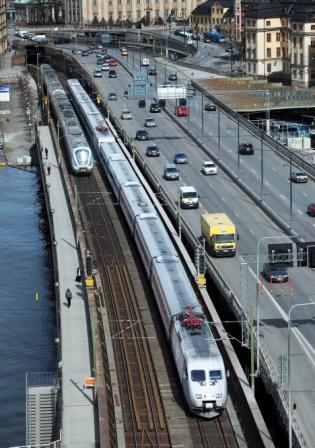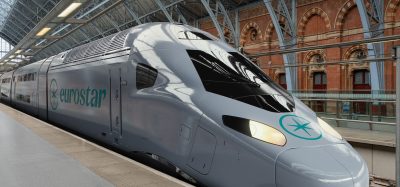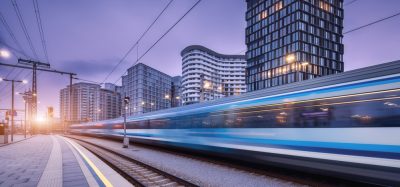Strengthening Sweden’s development through investments in very high-speed rail
Posted: 20 September 2010 | | No comments yet
Sweden is one of the European countries where railway has played an important role during the last two decades. Increasing railway traffic, more passengers and more freight transport is the result of improved quality and general awareness of the benefits of the railway. With more people commuting and more freight on the national rail system, the capacity has reached its limits. The ongoing discussion in Sweden is now not about the need for further investments in railway infrastructure, it is rather where, when and how.
Sweden is one of the European countries where railway has played an important role during the last two decades. Increasing railway traffic, more passengers and more freight transport is the result of improved quality and general awareness of the benefits of the railway. With more people commuting and more freight on the national rail system, the capacity has reached its limits. The ongoing discussion in Sweden is now not about the need for further investments in railway infrastructure, it is rather where, when and how.
Sweden is one of the European countries where railway has played an important role during the last two decades. Increasing railway traffic, more passengers and more freight transport is the result of improved quality and general awareness of the benefits of the railway. With more people commuting and more freight on the national rail system, the capacity has reached its limits. The ongoing discussion in Sweden is now not about the need for further investments in railway infrastructure, it is rather where, when and how.
The idea behind a complete new transport system, a very high-speed railway network, is that the existing infrastructure could be of better use than today. Passengers need to travel fast and with a reliable schedule. With separate tracks for very high-speed trains, the pace is the same and delays are not knocked on to other trains, as they do today.
The first comprehensive public report on this matter was presented to the Swedish government in September 2009. The overall cost was estimated at approximately €13 billion and the investment is clearly profitable. At the time when the report was submitted, there was already an ongoing political process with all major investments in road and railroad infrastructure for the upcoming decade. Therefore, the very high-speed rail is to be treated as a separate investment and no formal decision to initiate that process has been taken.
The organisation Future Rail Sweden has a mission to work for increased capacity of the present railway system and building high-speed railways. To facilitate the development of railway transports, a high and even standard is needed, as well as an improved process for planning and building railways and better integration between different modes of transport.
To stimulate development, and to further increase the possibilities in the future, Sweden needs to make the railway the backbone of a growing society again. Improved capacity, mobility and accessibility are essential parts of a society moving forward, towards economic growth and sustainable transportation.


Rail transport in Sweden has played an important role during the last two decades
There is a consensus that the need for more capacity is urgent to meet the future demand for railway transportation. However, other alternative ways to enable this are considered as well. One alternative is to upgrade the existing infrastructure and to double the capacity along the existing routes. This alternative would cost more than to build a new high-speed network. The shorter travel times would not be achieved and an even more vulnerable situation occurs during the building process than today. Instead of freeing up capacity for freight on the existing tracks, that possibility would be diminished.
More advantages
With designated tracks for high-speed, two advantages for passengers would be achieved. Travel time for longer distances will be considerably shortened, allowing meetings during the day without overnight stay, thus facilitating business trips. Time spent on the train is also working hours, which makes the train even more competitive.
Commuters will be able to travel over longer distance, which will expand the regional labour markets. Families can more easily live in one city and be able to work in another part of Sweden. In southern Sweden, we can also foresee a regional enlargement including the east of Denmark and perhaps even the northern parts of Germany. Better match between supply and demand for the workforce will not only benefit the employees, but also the companies facing recruitment problems could reach out to a larger pool of suitable staff. With a better functioning labour market, growth rate can increase and more entrepreneurial opportunities arise.
We know from recent experience that people do change their behaviour and travel patterns more than models can foresee. When new possibilities to travel and commute are a fact, people will consider other ways to arrange their lives.
Other regional effects that can be expected are investments in the cities and station areas. Commercial and housing districts in the surrounding area, or directly nearby, would face excellent opportunities and attract real estate investors. Rough estimates predict there to be up to 200 billion SEK in additional investments during 2010-2030, which is far more than the railway investment itself. New commercial real estate along the track may be up to 70% of today’s commercial area in Stockholm.
What is needed?
Strengthening Sweden’s development through new infrastructure will require political courage and a vision for the future. We know from history that Sweden’s existing railway tracks have been reasonably the same for 150 years now. In the 19th century, Johan August Gripenstedt was Minister for Finance between 1856 and 1866, and he had the insight and the courage to decide on building the railway network. He realised that it was an investment for the future and that further economic growth would make it economically viable to invest. We need the same visionary thinking and political courage among our decision makers in this century.
Remembering the difficulties to calculate the overall costs, depending on the circumstances, economic facts do matter, but should not be exaggerated. We all know problems that might occur, delaying the projects and increasing costs. There is also a greater risk that the project is delayed and will cost more than the other way around, at least if we handle this project the same way as previous major infrastructure have been made in Sweden. One exception from this is the Öresund Bridge, which is entirely user- financed and was completed on time 10 years ago.
The economic estimates used today vary from 90 billion SEK to over 200 billion SEK for the investment. The profitability also varies, depending on the estimated time for the investment. Depreciation on 40 years will make it less profitable than an economic lifetime of 60 years, which is a more realistic timeframe to be used. This is unfortunately, where the present debate is focusing, not upon the opportunities for growth and national development.
With new methods for financing, planning and building, the risk of delay and increasing costs could be reduced. There is no natural law predicting every infrastructure project to be more expensive than budget. Recent experience from PPP projects in Norway and Finland also show that it is possible to be ready on time, or even before, and that budget limits can be respected.
With a high degree of private involvement, there is both an additional source of financing, but also competence. If the incentives are right, the business case itself would be a driver in the project to show the economic rational for the overall investment.
Some objections and misunderstandings
As the unique financing model plays an essential role in forming a proper business case, it is necessary to understand that the very highspeed project does not interfere with existing plans or budgets.
There is already a 10 year investment plan in force for roads and railroads in Sweden. It has been developed in close cooperation with the regions and has clear priorities. In this plan, there is no budget for additional investments such as high-speed rail. Nevertheless, a new investment should not interfere with plans already made. On the other hand, the substantial part of the public expenses for high-speed railways will not arise until 2016 if a decision is made in 2010. There is still time and opportunities ntil it is completed. Anyway, the present railway network must be upgraded and can be done in a much shorter timeframe. The plans for the next five or six years will not be affected at all. Later investments should be properly merged into the larger investments so they can support the whole system.
What happens next?
The general election in September 2010 will not be a decisive point, though the two camps have a different view on this matter. The governing Alliance has cautiously tried to move forward, without any conclusive decisions so far. The red-greens in opposition have proposed a limited system, with full public finance. As it is now, neither side has responded appropriately to make very high-speed trains a reality in Sweden. In 2006, when the recent government came to power, there was no plan or discussion to invest, it can be said that the process has moved forward.
After the election, the new government will have to make a more definitive decision. It is a problem that a long-term investment like this does not have the proper support from both political camps, a clear consensus would have been better. Both the responsible Authority and the potential private investors need a more solid political situation to start with planning and investigations.
The fact that very high-speed trains are discussed and are an essential part of the public transport debate will make it difficult for the new government to avoid a decision in the very near future.
What has not been discussed is the alternative cost of doing nothing. How much would Sweden lose in the long-term by having the same structure today and in the future? The total investment is 125 billion SEK and would give a prime transport system and a more effective country. The share of public investment is equivalent to one half of a percent of the state budget.
Summary
There are several convincing arguments for investing in high-speed rail. Primarily it is a tool for facilitating growth. Passenger transport will be faster, more reliable and more convenient. With limited travel time and increased capacity, more people can and will choose rail as the preferred way to travel.
The expansion of regions has been mentioned in this article. The fact that regions have to be competitive in a global world makes it more of a necessity to develop the strength of the regions, but it is wishful thinking that different regions and city centres can be connected and more socially and economically interlinked.
Increased capacity is already needed and the cheapest and safest way to increase capacity is to reduce bottlenecks where they hamper traffic, and after that, it is a new transport system that would be the most efficient way to increase capacity. It is no use to settle for less than the best available solution to build the way into the future.
As discussed before, the unique financing model will not only limit the monetary responsibility for the government; it is also a way to prove the business case as such in the project. With additional sources, more stakeholders are involved and will invest not only financially, but also with competence and organisational capabilities.
One of the drawbacks of the railway today is that incidents might cause a chain reaction, leading to delays in other parts of Sweden. The more traffic, the more fragile the system is to distortions. A less vulnerable system is clearly preferred, as the trains can drive at roughly the same speed on the same tracks, where high-speed trains do not have to wait for freight trains or commuter trains.
Positive environmental aspects have not been one of the major arguments, but it is a fact that the electricity production in Sweden, where hydropower and nuclear power combined with renewables produces electricity with low carbon emissions. To reduce climate gas emissions from the transport sector is one of the governmental goals until 2030, and more transport on trains would contribute to achieving that goal.
A more accessible Sweden is what it all sums up to. A modern country where long-term investments shapes the future and changes the way we travel and transport goods.
About the Author
Sören Belin
Sören Belin began his career at AGA Infrared Systems AB in 1972 after which he has held many different Director and Vice President positions for companies such as ASG (now DHL and the SAS Group). Between 2007 and 2009, Mr. Belin worked at Green Cargo AB as Head of the Business Division and finally Chief Executive Officer.
OUT NOW: The Definitive Guide to Rail’s Digital Future
The rail industry is undergoing a digital revolution, and you need to be ready. We have released our latest market report, “Track Insight: Digitalisation.”
This is not just another report; it’s your comprehensive guide to understanding and leveraging the profound technological shifts reshaping our industry. We move beyond the buzzwords to show you the tangible realities of AI, IoT, and advanced data analytics in rail.
Discover how to:
- Optimise operations and maintenance with real-time insights.
- Enhance passenger services through seamless, high-speed connectivity.
- Leverage technologies like LEO satellites to improve safety and efficiency.
Featuring expert analysis from leaders at Nomad Digital, Lucchini RS, Bentley Systems and more, this is a must-read for any rail professional.







